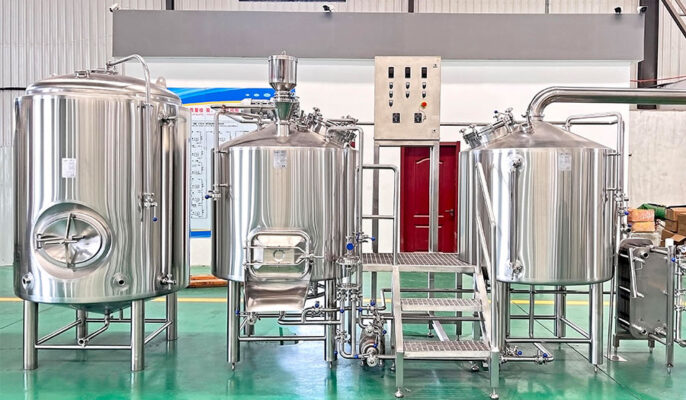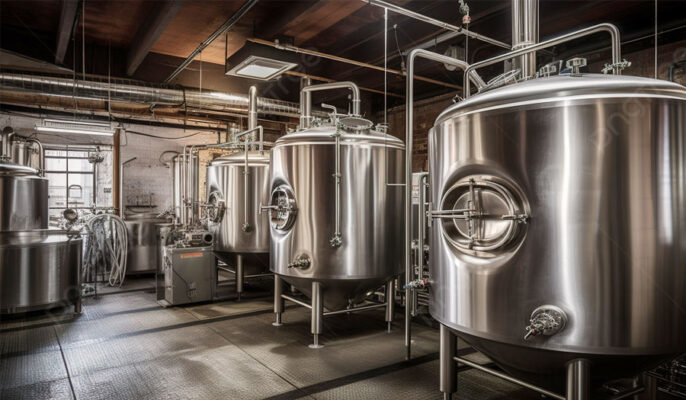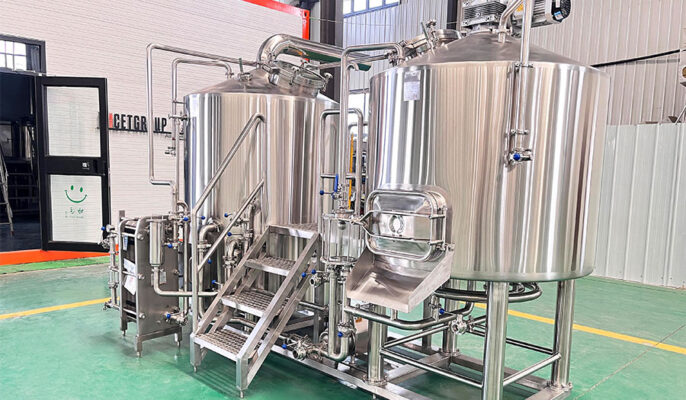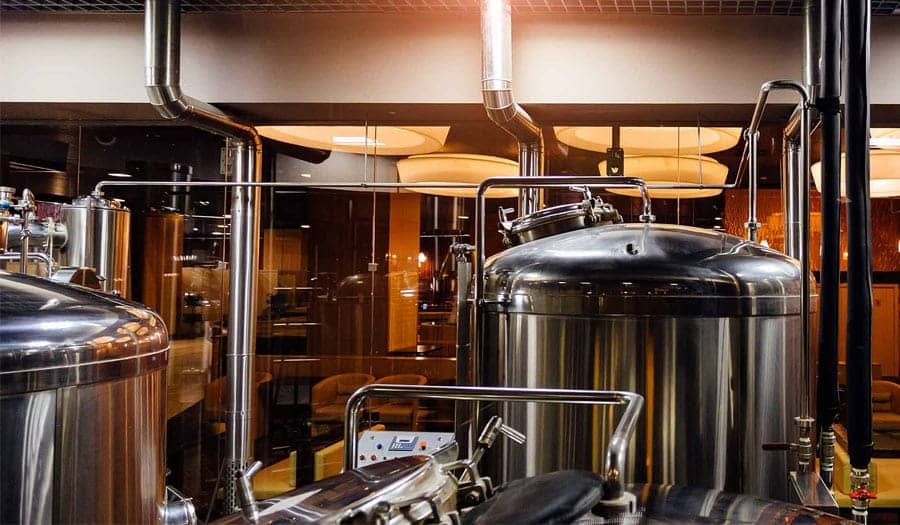In the era of rapid development of the brewing industry, microbrewery attracts the attention of many consumers with its unique style and professionalization. With the demand for craft beverages, starting a microbrewery is not only an exciting business opportunity but also a challenging career. From purchasing microbrewery equipment to production and marketing, every step must be carefully planned and implemented. This article will provide you with a comprehensive startup guide to help you systematically understand and successfully start every aspect of a microbrewery so that you can better start your brewing journey.
What is a microbrewery?
A microbrewery is a smaller brewery that focuses on producing small quantities of high-quality, handcrafted beer. Unlike large industrial breweries, microbreweries often focus on unique flavors and innovative recipes, offering personalized products to meet specific consumer needs. They usually have a smaller production scale but have great flexibility in brand positioning and marketing, and can quickly adapt to market trends and changes in consumer tastes.
- Quantity: The general definition of a microbrewery produces no more than 15,000 barrels of beer per year.
- Batch size: Microbreweries usually brew on a small scale.
- Brewing type: Beers brewed by microbreweries often have seasonal or themed flavors. Brewers may try various methods to brew very unique beers. They may focus on a specific style or have a signature beer.
- Limited distribution: Most microbreweries do not distribute their beer on a large scale, or even at all.
- Taxes: Microbreweries usually face lower taxes than large breweries.

How to start a microbrewery?
Research and write a brewery business plan
Executive summary
The executive summary is the essence of your business plan, and it clearly and concisely states the core business objectives and strategic vision of your brewery. It should include your mission statement, which clearly states the long-term goals you hope to achieve with this business. You need to outline your brewery’s location, business scope, core products, and basic information about your employees and leadership team.
Company profile
The company profile section details your brewery’s philosophy and brand. You need to show how your business positions itself in the market, including a detailed description of the local market and target customers. This section should cover your brand story, market positioning, brand values, and characteristics to help potential investors and customers understand your brand personality and core strengths.
Market analysis
The market analysis section is a crucial part of the business plan, which demonstrates your understanding of the industry through in-depth market research. You need to share your market research results and explain how you plan to stand out from the fierce competition. Conduct a detailed competitive analysis to investigate the operations of other breweries in your area and understand their products, pricing, and market strategies.
Organization and Management
In the Organization and Management section, you need to list your core team members and their responsibilities, including their backgrounds and experience. In addition, you should also describe in detail the positions and responsibilities of other employees you plan to hire to ensure that your team can accomplish your business goals. Also, list the key suppliers and the products or services they provide, and explain how partnerships with these suppliers support your business operations.
Services and Products
In the Services and Products section, describe in detail the types and flavors of beer you plan to produce, and include samples of possible menus. If you plan to offer food or other related products, you should also list them here. This section should highlight the uniqueness and market competitiveness of your products, such as unique recipes, hand-crafted processes, or innovative flavor combinations.
Marketing and Sales
The Marketing and Sales section covers your strategies and plans for building your customer base. Discuss how you plan to attract and retain customers, including branding, advertising strategies, and methods of customer interaction. You can develop a detailed pricing plan, analyze how product costs affect the price structure, and develop strategies for how to price in the market to achieve profitability.
Financial Budget
The financial section is the core part of the business plan and involves forecasting the future financial situation of your brewery. Include a balance sheet, cash flow statement, and profit and loss statement for the previous five years to demonstrate your financial health and profitability. If you plan to seek financing, describe in detail the total amount of funds you need and what they will be used for. For example, you may need funds for equipment purchases, facility construction, raw material procurement, or marketing promotion.

Obtain Necessary Licenses
The Alcohol and Tobacco Tax and Trade Bureau (TTB) under the U.S. Treasury Department is responsible for regulating the beer industry. All businesses regulated by the TTB require a license to operate legally. Brewery owners may also have to apply for permits or licenses from their state and city, including a liquor license. Cities often restrict where alcohol can be produced and sold, so do your homework before deciding on a location.
- Brewing License: Apply to local alcoholic beverage regulatory agencies.
- Health and Safety License: Ensure that the production facility meets health and safety standards.
- Business Registration: Register your company name and trademark.
Purchase Microbrewery Equipment
The equipment and facilities of a microbrewery are critical to production quality and efficiency. Choosing the right equipment and a well-designed production facility can improve production efficiency and reduce operating costs.
- Wort barrel: The wort barrel is the starting point of the beer brewing process. It is used to mix crushed grains with hot water to form wort, which is then separated into wort and lees.
- Lauter tun: The lauter tun is used to separate the wort from the lees. This process, called lautering, involves draining the wort through a false bottom while rinsing the leaves with hot water to extract as much sugar as possible.
- Boiling kettle: In the boiling kettle, the wort is heated and boiled to purify the wort and extract flavors from the hops. This stage of the brewing process is essential to developing the desired flavor and aroma of the finished beer.
- Heat exchanger: Heat exchangers are used to quickly cool the wort after boiling, which is essential to prevent off-flavors and promote proper yeast activity during fermentation.
- Fermentation tank: Also known as a single tank, the fermentation tank is where the cooled wort is mixed with yeast to start fermentation. These tanks come in a variety of sizes and materials, with stainless steel being the most common.
- Pumps and piping: Efficient pumps and piping are essential for transferring liquids between vessels during the brewing process. Investing in high-quality pumps and well-designed piping systems will ensure smooth operation and reduce the risk of contamination.
When choosing equipment, you need to consider its production capacity, energy consumption, maintenance cost, and adaptability to the plant space. You can choose the right equipment by consulting equipment suppliers (such as Micet Group) or industry experts.
Marketing Management
Establishing a unique and attractive brand image is the key to success. The brand name, logo, packaging design, etc. should be consistent with the brand positioning and convey your brand story and values.

Costs of Starting a Microbrewery
Establishing a microbrewery can require a significant capital investment, depending on factors such as the size of the operation, the quality of the equipment, and the level of automation. Typically, the cost of setting up a microbrewery ranges from $100,000 to $1 million. But keep in mind that there are ongoing costs to consider, such as maintenance, raw materials, and labor.
First, the size of your brewery plays a crucial role in determining the overall cost. Typically, larger systems require higher investments, but they can also increase your production capabilities. Therefore, it is crucial to find a balance between your budget and production goals.
Next, the quality of your equipment is an important factor to consider. While investing in high-quality equipment may seem expensive upfront, it will generally result in more reliable and consistent brewing results. In addition, it will save you money on maintenance and replacement costs in the long run.
Don’t forget about ongoing costs, as they are an important aspect of your microbrewery budget. Regular maintenance, purchasing raw materials, and hiring a skilled workforce are all costs you need to consider when planning your brewery setup.
FAQ
How much does it cost to start a microbrewery?
The cost of starting a microbrewery varies depending on a variety of factors, such as geographic location, facility size, and equipment configuration. Generally speaking, startup costs include plant rental, construction and renovation costs, brewing equipment purchases, raw material costs, brand design and marketing expenses, personnel salaries, licenses, and regulatory compliance. The initial budget usually ranges from $100,000 to $1 million, depending on your size and business goals.
What is the right size for a microbrewery?
The size of a microbrewery can be adjusted according to your budget and market demand. Generally speaking, the production capacity of a microbrewery ranges from 500 to 15,000 barrels per year. Smaller breweries may start with an annual output of several thousand barrels, while larger facilities may reach more than 15,000 barrels. Choosing the right scale depends on your market positioning, financial status, and business goals.
How to choose brewing equipment?
- Production capacity: Choose the right equipment based on your expected production scale.
- Equipment type: including mash kettle, boiling kettle, fermentation tank, cooling system, filtration equipment, etc.
- Energy efficiency: choose energy-saving and efficient equipment to reduce operating costs.
- Maintenance and service: choose a reliable brand and consider the maintenance and warranty service of the equipment.
- Budget: choose cost-effective equipment according to your budget.
How much space does my microbrewery need?
A 3bbl plant only needs 30-50 square meters to operate. For a 10bbl plant, at least 120-180 square meters is required. Relocating a brewery is expensive and time-consuming, not to mention the interruption of beer production, which is not good for your old customers.




